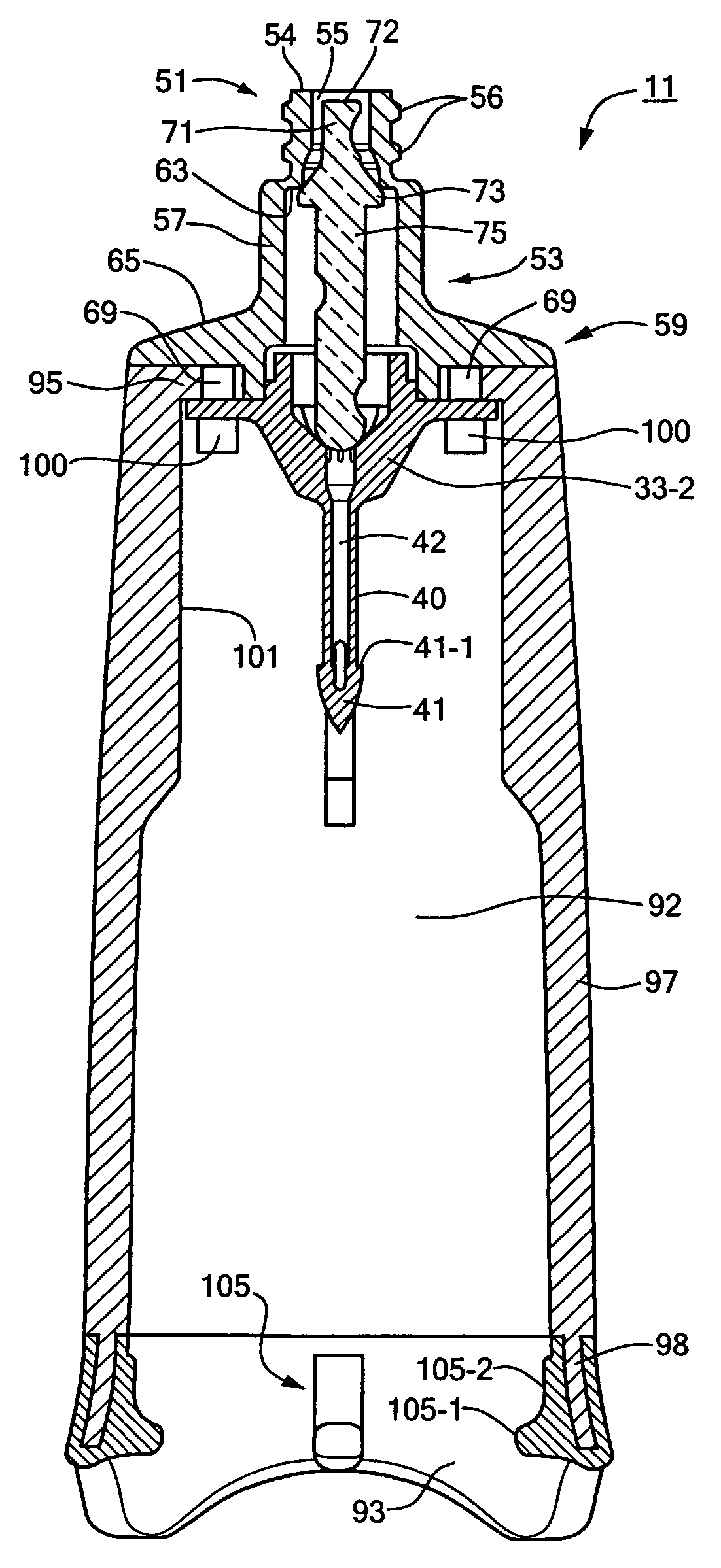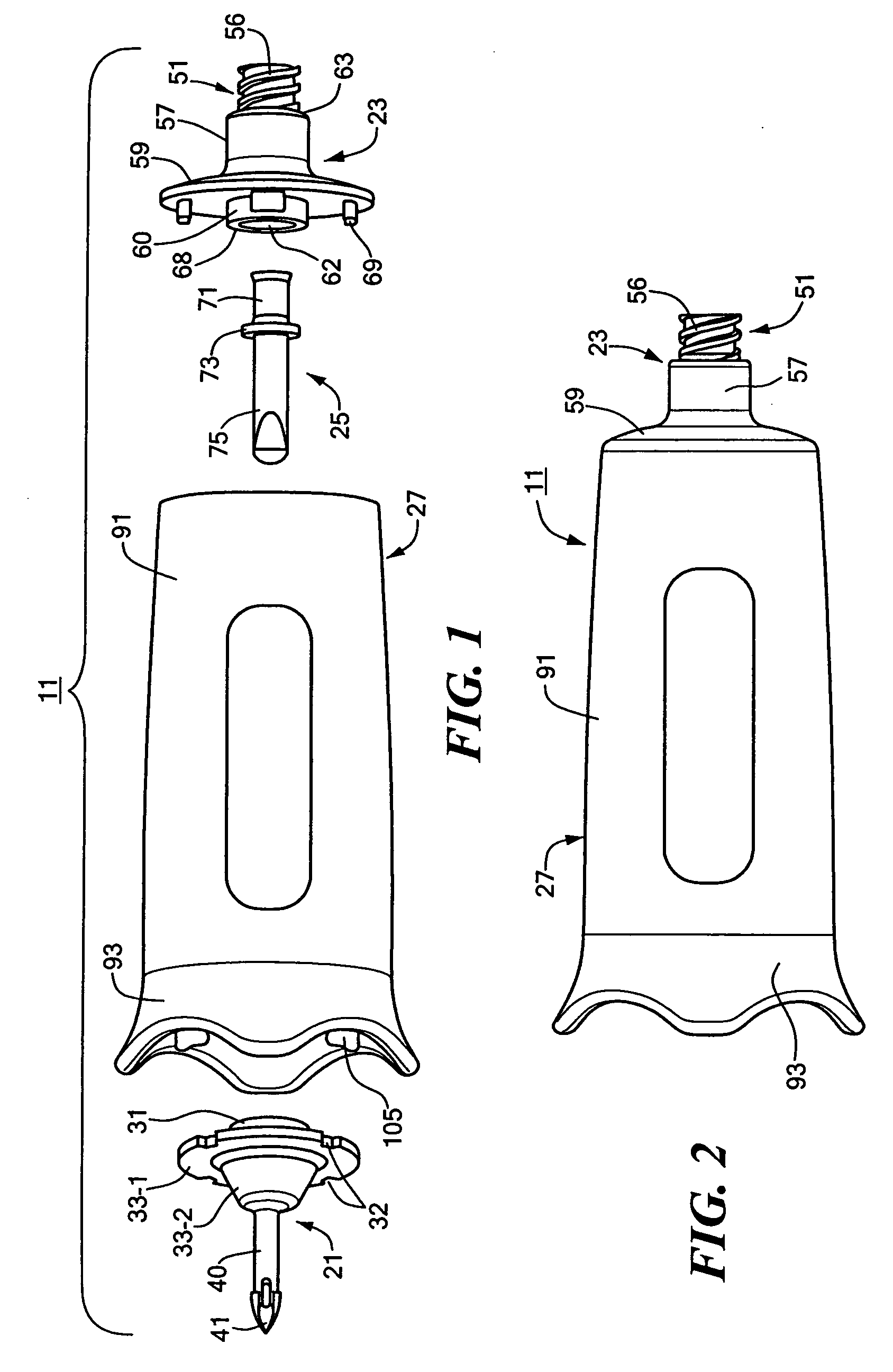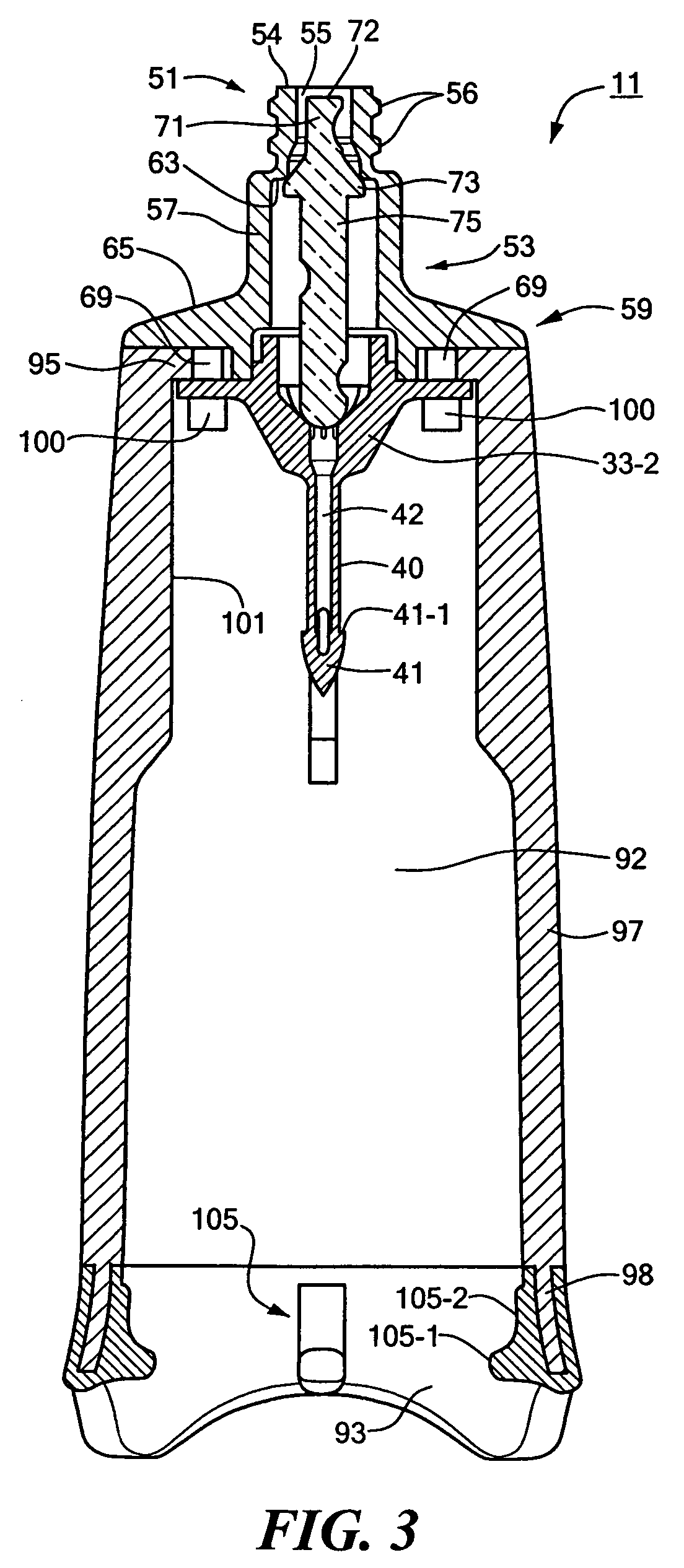Vial adaptor
a technology of adaptors and adapters, which is applied in the field of adaptors, can solve problems such as ulcers, esophagitis, and irritating the esophagus, and achieve the effects of reducing the risk of ulcers
- Summary
- Abstract
- Description
- Claims
- Application Information
AI Technical Summary
Benefits of technology
Problems solved by technology
Method used
Image
Examples
first embodiment
[0037]Referring now to FIGS. 1 through 3, there are shown partially exploded perspective, side and longitudinal section views, respectively, of a vial adapter constructed according to the teachings of the present invention, said vial adapter being represented generally by reference numeral 11.
[0038]Adapter 11 comprises a needle-bearing member 21, a luer-lock-bearing member 23, a valve 25, and a body 27.
[0039]Needle-bearing member 21, which is also shown separately in FIGS. 4(a) through 4(f), is a unitary structure, preferably made of a rigid, amorphous, molded plastic. (Where adapter 11 is intended to be used with vials containing dimethylsulfoxide (DMSO), needle-bearing member 21 is preferably made of TOPAS polymer (Ticona, Summit, N.J.), a thermoplastic olefin of amorphous structure (also known as a cyclo-olefin copolymer or “COC”). Where adapter 11 is intended to be used with vials not containing DMSO, needle-bearing member 21 may be made of TOPAS polymer or another rigid amorpho...
second embodiment
[0059]Referring now to FIGS. 11(a) and 11(b), there are shown partially exploded perspective and perspective, partly in section, views, respectively, of a vial adapter constructed according to the teachings of the present invention, said vial adapter being represented generally by reference numeral 201.
[0060]Vial adapter 201 comprises a needle-holding member 221, a needle 222, a luer-lock-bearing member 223, a valve 225, a spring 226, and a body 227.
[0061]Needle-holding member 221 is a unitary member, preferably made of a rigid, amorphous, molded plastic. (Where adapter 201 is intended to be used with vials containing dimethylsulfoxide (DMSO), needle-holding member 221 is preferably made of TOPAS polymer. Where adapter 201 is intended to be used with vials not containing DMSO, needle-holding member 221 may be made of TOPAS polymer or another rigid amorphous material, such as a polycarbonate or an acrylic.) Member 221 is shaped to include a top wall 231, a side wall 233 and a bottom ...
PUM
 Login to View More
Login to View More Abstract
Description
Claims
Application Information
 Login to View More
Login to View More - R&D
- Intellectual Property
- Life Sciences
- Materials
- Tech Scout
- Unparalleled Data Quality
- Higher Quality Content
- 60% Fewer Hallucinations
Browse by: Latest US Patents, China's latest patents, Technical Efficacy Thesaurus, Application Domain, Technology Topic, Popular Technical Reports.
© 2025 PatSnap. All rights reserved.Legal|Privacy policy|Modern Slavery Act Transparency Statement|Sitemap|About US| Contact US: help@patsnap.com



